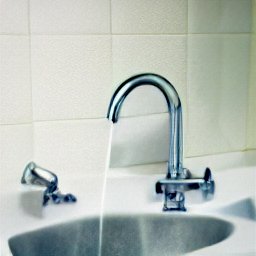If you’re looking for a guide on how to install or fix an indoor faucet, you’ve come to the right place. Indoor faucets can be a bit tricky to install, but with a little know-how, you can have it up and running in no time.
There are a few different types of indoor faucets on the market these days. You can find traditional faucets, which come in many different shapes and sizes, or you can find more contemporary faucets, which often have a sleek and minimalist design. Whichever type of faucet you choose, it’s important to make sure that it’s the right fit for your sink.

If you’re looking for a traditional faucet, there are a few things you should keep in mind. First, make sure that the faucet is the right height for your sink. You don’t want it to be too tall or too short. Second, make sure that the faucet has the right number of holes. If your sink doesn’t have any holes, you’ll need to get a faucet that comes with a deck plate.
If you’re looking for a contemporary faucet, there are a few things you should keep in mind. First, make sure that the faucet is the right shape for your sink. You don’t want it to be too wide or too narrow. Second, make sure that the faucet has the right number of holes. If your sink doesn’t have any holes, you’ll need to get a faucet that comes with a deck plate.
No matter what type of faucet you choose, it’s important to make sure that it’s made from high-quality materials. You don’t want to have to replace your faucet every few years.
To start, you’ll need to gather the following supplies:
-Indoor faucet
-Teflon tape
-Channel-lock pliers
-Phillips head screwdriver
-Wrench
-Crescent wrench
-Pipe wrench
-Towel
-Bucket
-Plumbers putty
Once you have all of your supplies in hand, you can begin the installation process. The first step is to remove the old faucet. This can be done by using the channel-lock pliers to remove the nuts that hold the faucet in place. Once the nuts are removed, you can pull the faucet off of the sink.
Next, you’ll need to apply the plumbers putty to the area where the faucet will sit. This will help create a watertight seal between the faucet and the sink. Once the putty is in place, you can install the new faucet.
To do this, you’ll first need to thread the waterlines through the hole in the sink. Once they’re through, you can tighten them down with the wrench. Then, you can install the faucet by bolting it in place with the screws that come with it. Be sure to use Teflon tape on the threads of the screws to create a watertight seal.
Finally, you’ll need to attach the waterlines to the faucet. To do this, you’ll need to use the crescent wrench to loosen the compression nut on the faucet. Once it’s loose, you can tighten it down with your fingers. Then, you can reattach the aerator by screwing it back on to the end of the faucet.
And that’s it! You’ve successfully installed your new indoor faucet.